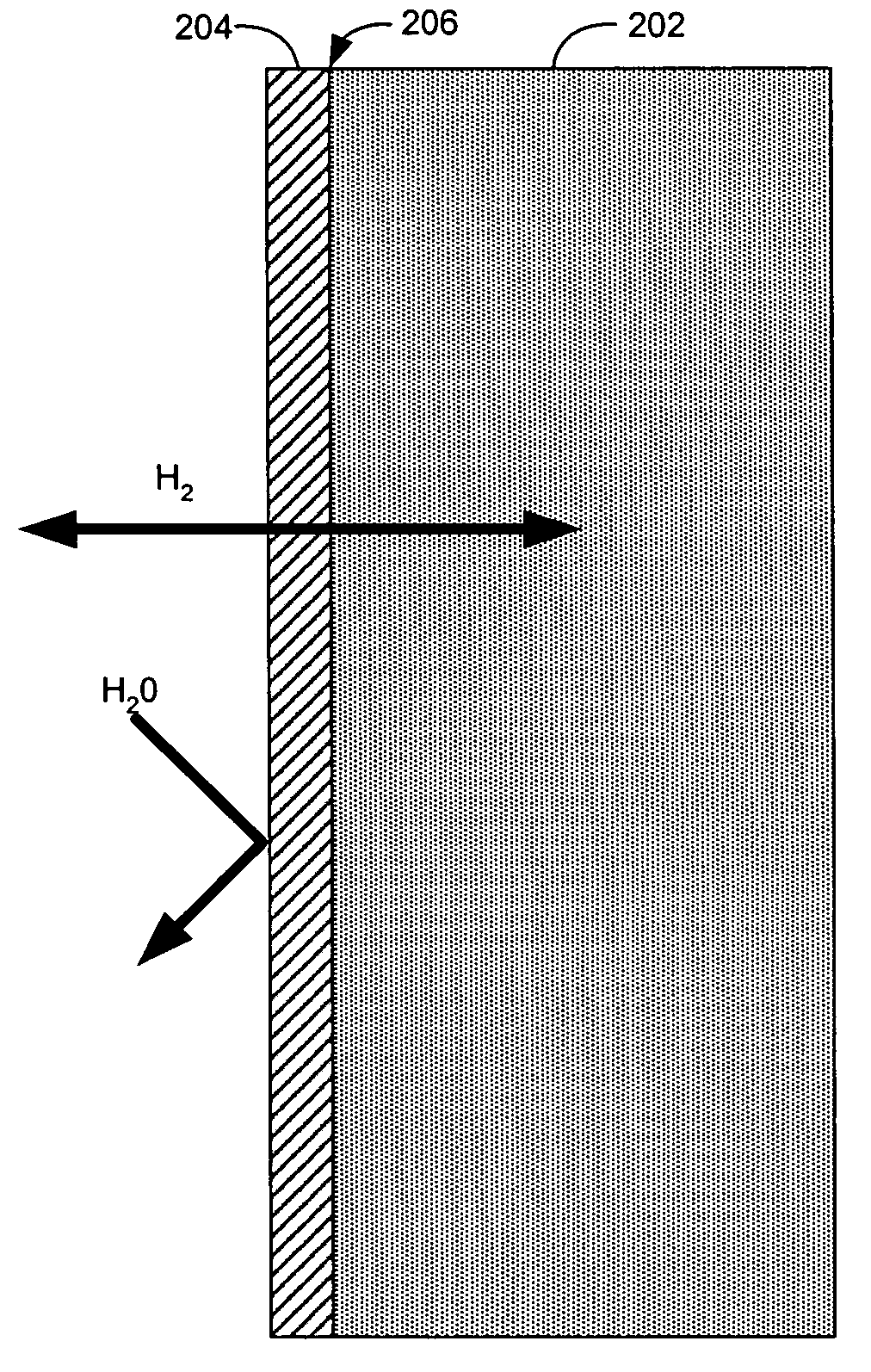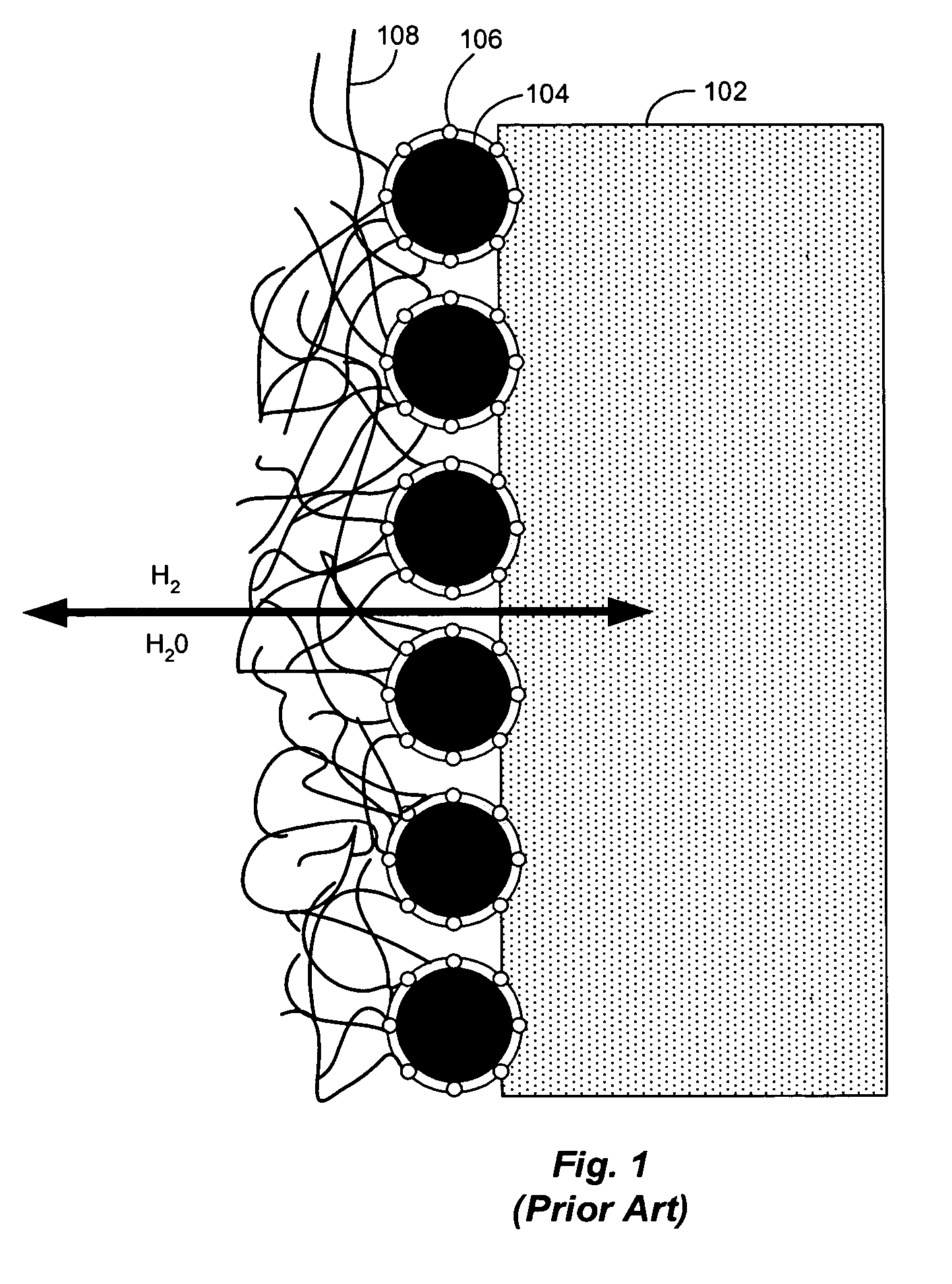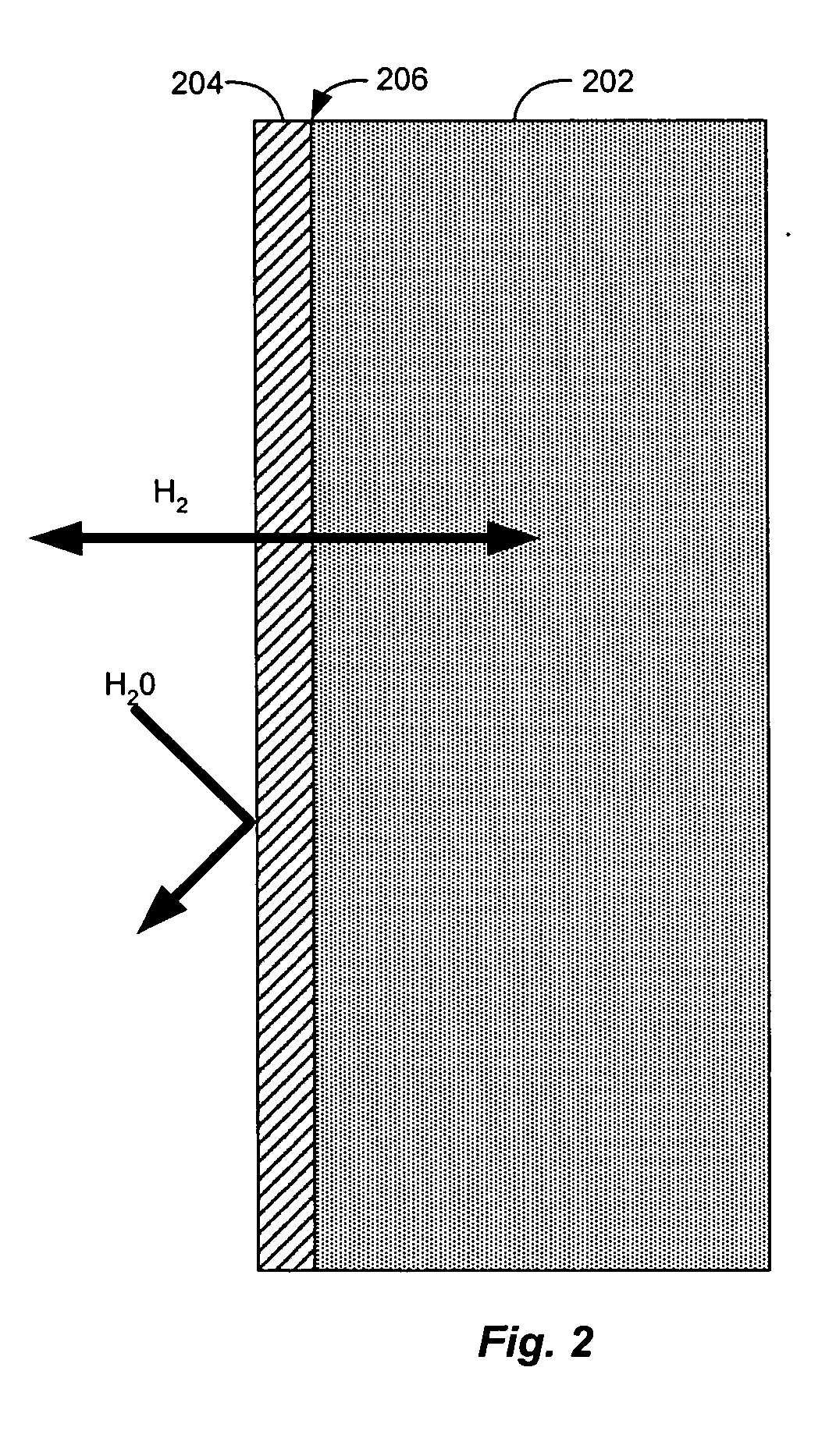Hydrogen diffusion electrode for protonic ceramic fuel cell
a ceramic fuel cell and hydrogen diffusion electrode technology, applied in the direction of cell components, final product manufacturing, sustainable manufacturing/processing, etc., can solve the problems of limiting the generation of electric current, affecting the efficiency of fuel cells, and affecting the production efficiency of fuel cells
- Summary
- Abstract
- Description
- Claims
- Application Information
AI Technical Summary
Benefits of technology
Problems solved by technology
Method used
Image
Examples
example 1
A hydrogen / air fuel cell according an embodiment of the invention was operated for 750 hours at 750° C. The fuel cell included a 1 mm thick electrolyte disc made from a solid oxide perovskite cermamic called BCY10, which has the formula BaCeo0.9Y0.1O(3-δ), where δ is about 0 to 0.10. The electrolyte was covered on the cathode side by a platinum electrode and on the anode side by a non-porous 3 μm thick sputtered nickel electrode. The fuel cell produced an average output between 30 and 40 mA / cm2 at 700 mV.
example 2
Electrical power output of a second hydrogen / air fuel cell according to an embodiment of the invention was measured. This cell included a 500 μm thick BCY10 electrolyte covered on the cathode side by a platinum electrode and on the anode side by a non-porous 2.3 μm thick nickel electrode. The fuel cell produced an average of 100 mA / cm2 at 700 mV, with a maximum power of 85 mW / cm2.
In both experiments, the fuel gas used was 99.999% dry hydrogen. No contamination or corrosion of the nickel fuel side anode electrode was observed after approximately 3 weeks continuous operation. On the cathode side of the cell, oxygen supplied by air was reduced with the migrating protons to form water. No poisoning or corrosion of the porous platinum electrode or electrolyte was observed.
PUM
| Property | Measurement | Unit |
|---|---|---|
| temperature | aaaaa | aaaaa |
| temperature | aaaaa | aaaaa |
| thickness | aaaaa | aaaaa |
Abstract
Description
Claims
Application Information
 Login to View More
Login to View More - R&D
- Intellectual Property
- Life Sciences
- Materials
- Tech Scout
- Unparalleled Data Quality
- Higher Quality Content
- 60% Fewer Hallucinations
Browse by: Latest US Patents, China's latest patents, Technical Efficacy Thesaurus, Application Domain, Technology Topic, Popular Technical Reports.
© 2025 PatSnap. All rights reserved.Legal|Privacy policy|Modern Slavery Act Transparency Statement|Sitemap|About US| Contact US: help@patsnap.com



